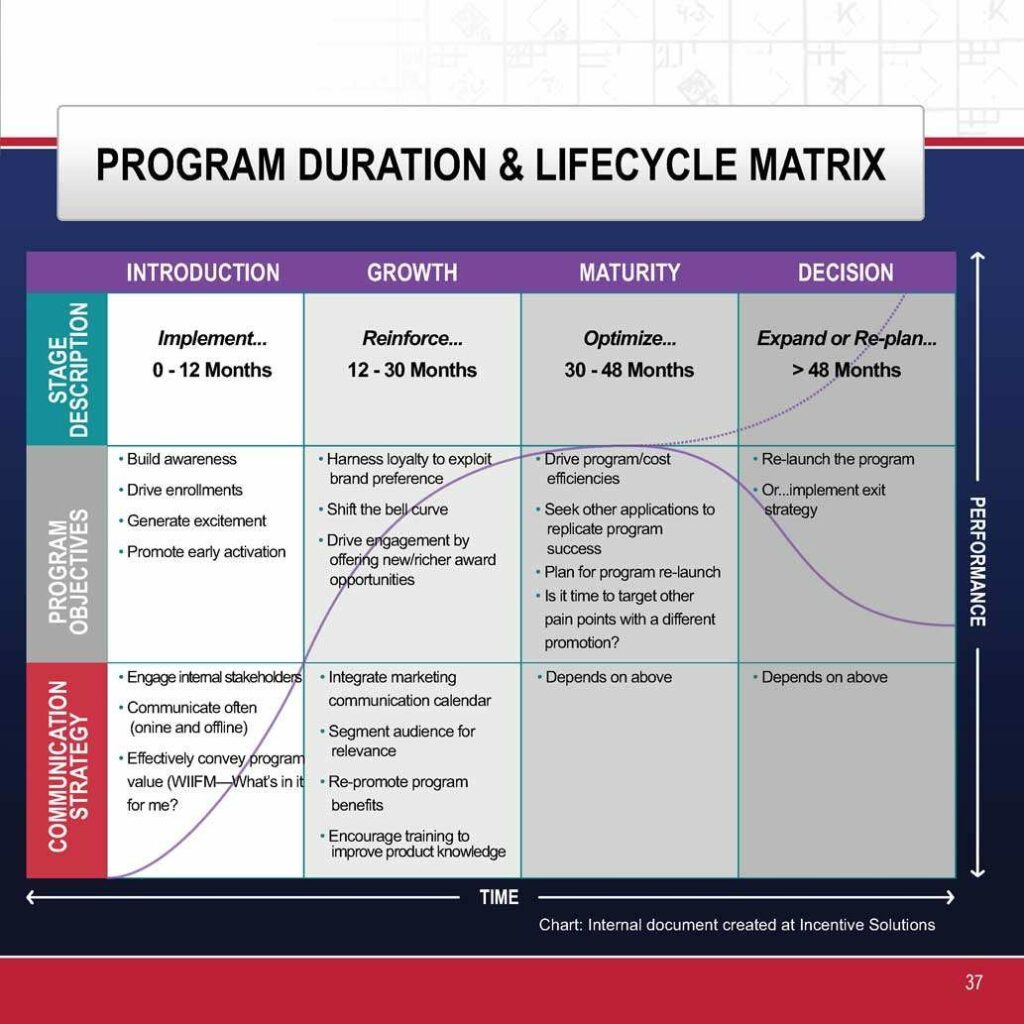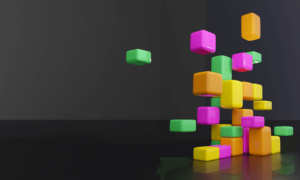Loyalty programs evolve over time. Eventually, even the most exciting loyalty programs get a little stale. Participants become desensitized to the value proposition. However, the good news is that loyalty programs follow a predictable life cycle. By planning ahead, you can adjust your loyalty program strategy for each stage of the loyalty program life cycle to keep your program fresh.
The five stages of the loyalty program life cycle are:
- Planning
- Introduction
- Growth
- Maturity
- Decision
In order to maximize your ROI, it’s important to have a defined loyalty program strategy for each of these steps.
The Loyalty Program Life Cycle Infographic
Below is a visualization of the loyalty program life cycle. It includes descriptions program, objectives, and communication strategy for each phase. We’ll be exploring each of these phases more in depth and sharing loyalty program tips.

Compiled from years of data across hundreds of loyalty programs, this timeline isn’t exact. The time between each stage will differ from company to company. But it gives you a good idea of what to expect for your own program based on overall averages.
Planning Phase: Strategic Decisions Made Before Launching Your Program
You’ll notice that the Planning Phase isn’t included in the infographic above. That’s because it occurs before you launch the program. In a sense, your loyalty program isn’t alive yet. Although you’ll have the ability to make adjustments later on, the decisions you make during the Planning Phase will impact how your program performs throughout its life cycle
The loyalty program Planning Phase includes:
- Determining your objectives.
- Establishing your budget.
- Analyzing your target audience.
- Choosing incentive reward types.
- Identifying KPIs.
- Choosing an incentive software platform.
- Training (or outsourcing) program administration.
Each of these steps has multiple layers of loyalty program strategy that have to be hashed out prior to launching your program. While this is beyond the scope of this blog post, you can explore each of these steps in depth by downloading your free copy of the BthruB Incentive Program Playbook.
Introduction Phase: Launching Your Program
The Introduction Phase is when you implement your loyalty program. It includes the first 12 months of your loyalty program launch.
Objectives for the Introduction Phase include:
- Building awareness.
- Driving enrollments.
- Generating excitement.
- Promoting early activation.
During the Introduction Phase, your goal is to effectively market your program to target customers. No matter how awesome your program is, it will fall flat if it isn’t top-of-mind with customers.
Elements of loyalty program strategy for the Introduction Phase include:
- Make sure your internal stakeholders are 100% onboard and aware of what your loyalty program is designed to accomplish.
- Effectively convey the program’s value proposition to customers.
- Communicate with participants early and often – across a variety of channels.
It’s important to treat your loyalty program as a true marketing funnel. That includes creating end-to-end multi-touchpoint marketing campaigns that start with building awareness. For more information loyalty program strategy during the Introduction phase, check out “Best Practices for Loyalty Marketing.”
Growth Phase: Reinforcing Desired Behaviors
The Growth Phase is when your program really gets going. During this stage of your loyalty program, customers are consistently earning points, redeeming for rewards, and are invested in your program.
Program objectives for the Growth Phase includes:
- Harnessing loyalty to create true brand preference.
- Driving engagement by offering new and richer incentive promotions.
Towards the end of the Growth Phase, you’ll notice that the performance increase begins to slowly taper off. It’s up to you to keep your program fresh and exciting for the long haul.
During the Growth Phase, your loyalty program strategy includes:
- Integrate a marketing communication calendar to keep customers invested.
- Segment your customers for a higher degree of personalization.
- Re-promote program benefits.
- Encourage training to improve product knowledge
Towards the end of the Growth Phase, you’ll notice that the performance increase begins to slowly taper off. This is a good time to incorporate elements of gamification like leaderboards, spin-to-wins, and trivia to keep your program fresh. Or you could offer bonus promotions or more exclusive rewards to enhance the value proposition of your loyalty program.
Maturity Phase: Optimizing Your Loyalty Program
During the Maturity Phase, you’ll notice that the bell curve in the infographic begins to flatten out. Why does this happen? Everything was growing so rapidly up to this point. The answer is a psychological principle known as habituation. Customers begin to become desensitized to your loyalty program value proposition.
As growth begins to stagnate, it’s time to evaluate and optimize your program. Loyalty program strategy for the Maturity Phase includes:
- Find ways to make your program more efficient to drive down costs.
- Seek other applications to replicate program success.
- Begin planning for program re-launch.
- Explore other pain points you can target with a different promotion.
The Maturity Phase is very much like the Planning Phase, except now you have additional data, insights, and experience under your belt.
Decision Phase: Where Does My Program Go From Here?
The Decision Phase typically occurs 48 months (5 years) after program launch. At this point, you have two options:
- Expand your loyalty program through a re-launch.
- Implement an exit strategy and re-plan a way to replicate your success.
Depending on your decision, performance during the Decision Phase can either experience an upshift in growth or begin to decline.
Building customer loyalty and retention isn’t something companies can just do one time and then never think about again. It’s an ongoing effort. We recommend incorporating a plan for continuous improvement into your loyalty program strategy. Use the customer data your program generates to inform the adjustments you make along the way. Invest in modular incentive technology so that you have the agility to enhance your program without having to go completely back to the drawing board. And team up with a trusted loyalty program provider to help manage your program.



